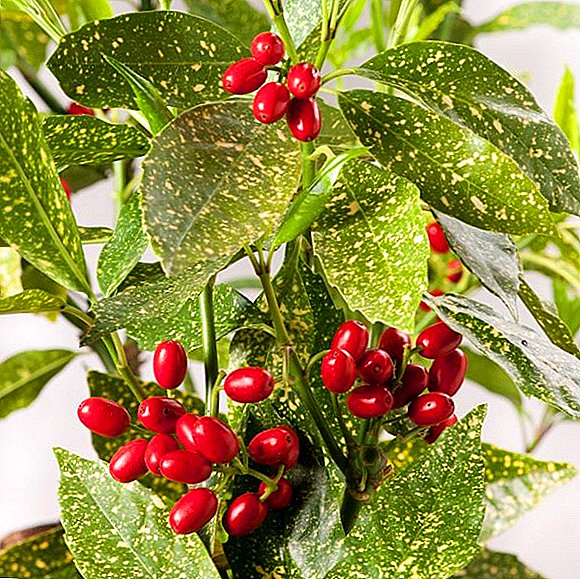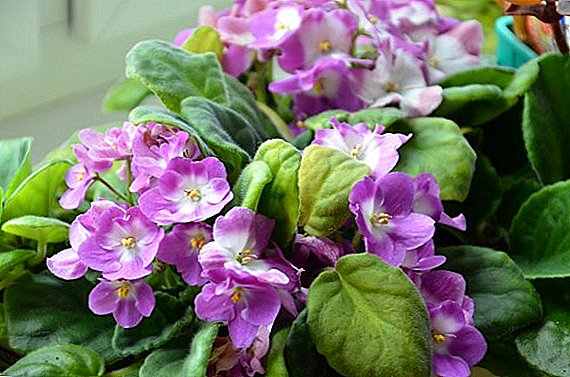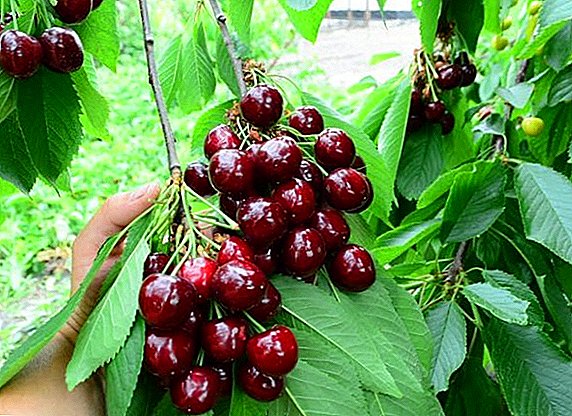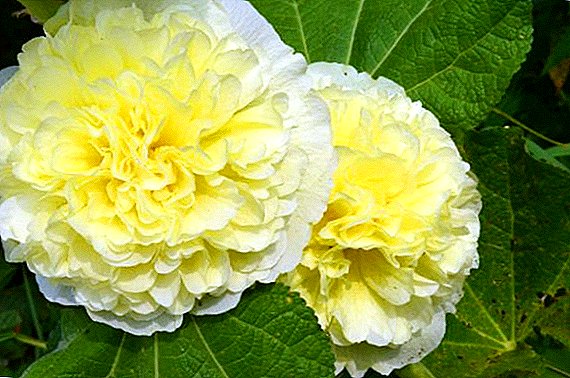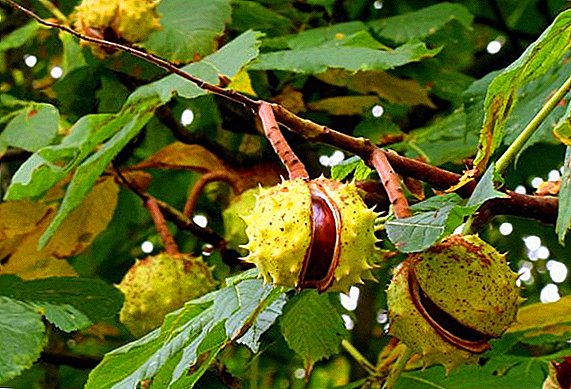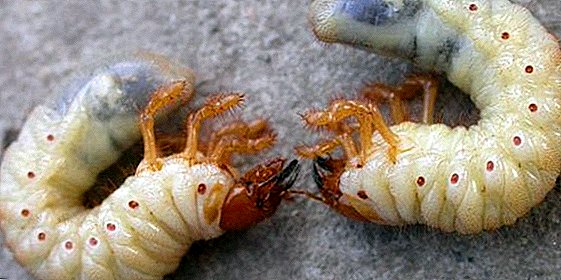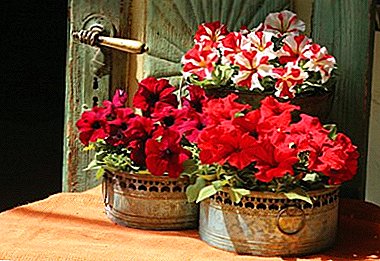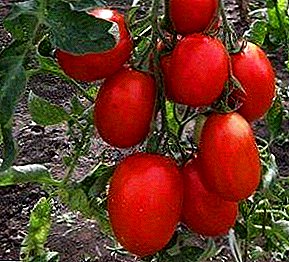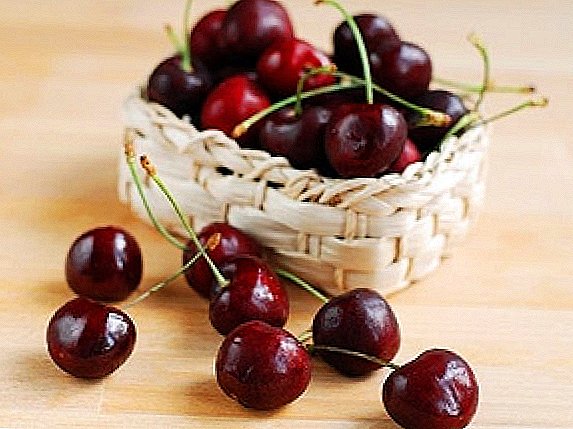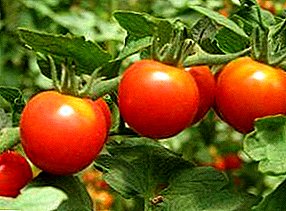
Tomato "Klusha" can rightly be called an excellent result of the work of domestic breeders.
It attracts gardeners with its compact bush, while farmers are impressed by the early terms of tomato ripening. But both those and others note a unique number of fruits in the hands on the bushes of the plant.
Further in the article we will consider the description of this variety of tomato, tell you how to grow these tomatoes, what subtleties of agricultural technology will help to get the best result.
Tomato "Klusha": variety description
| Grade name | Broody |
| general description | Early ripe determinant variety of tomatoes for cultivation in greenhouses and open ground. |
| Originator | Russia |
| Ripening | 90-95 days |
| The form | Flat-round shape, with slightly pronounced ribbing. |
| Colour | Unripe fruits are light green, ripe ripe red (or faded pink for the second species) |
| Average tomato mass | 90-110 grams, when disembarking in a film cover reach a weight of 140-150 grams |
| Application | Great for fresh consumption and preservation. |
| Yield varieties | 1.8-2.2 kilograms from a bush, about 10.0-11.5 per square meter |
| Features of growing | Agrotechnika standard |
| Disease resistance | It has good resistance to major diseases of solanaceous crops. |
 It is characterized by early ripening. Fresh tomatoes are usually harvested 90-95 days after planting seeds for growing seedlings.
It is characterized by early ripening. Fresh tomatoes are usually harvested 90-95 days after planting seeds for growing seedlings.
Standard stem determinative type, height does not exceed 55-60 centimeters. About indeterminantny grades read here. The small size of the bush allows 6-7 plants to be planted per square meter of soil. The compactness of the bush makes it possible to grow Klusha tomatoes even on the balcony in a container or a container of sufficient size.
The producer called the pink variety variety "Superklusha". On the description of the variety of tomato "Superklusha" we dwell in more detail, since it has a number of unique qualities. Throwing a look at the bush, you immediately understand where the name came from. In appearance, the plant resembles a large chicken with ruffled feathers, which hid all the chickens under it.
After all, the outside due to the large number of leaves is almost not visible ripening tomatoes. The leaves are medium in size, the usual form of tomatoes, dark green. As they grow, gardeners advise the removal of leaves on top of the brushes of formed fruits.
In the description of the Klusha tomato variety, it is indicated that it is adapted to cultivation in all climatic zones of Russia. It has good resistance to major diseases of solanaceous crops. That is confirmed by numerous reviews. The best yield is achieved when the bush is grown by 2-4 stems. The stems are very powerful, and, judging by the description, the Klusha tomato does not need to be tied up.
But, according to reviews received from gardeners, it is better to install thin supports around the bush, which will allow the plant not to lie on the ground. According to the recommendations received, the plant does not require a pinching.
Specifications
In the description of Klusha tomatoes, the red-fruited subspecies is given, only the color distinguishes them from the Super Klusha tomatoes. Country of breeding - Russia. Fruits are flat-rounded in shape, with slightly pronounced ribbing. Unripe tomatoes are light green, ripe ripe red (or faded pink for the second variety). Average weight: 90-110 grams, when landing in a film cover reach a weight of 140-150 grams.
And in the table below you will find such a characteristic as the weight of fruits from other varieties of tomatoes:
| Grade name | Fruit weight (grams) |
| Broody | 140-150 |
| Katya | 120-130 |
| Crystal | 30-140 |
| Fatima | 300-400 |
| Explosion | 120-260 |
| Raspberry jingle | 150 |
| The Golden Fleece | 85-100 |
| Shuttle | 50-60 |
| Bella Rosa | 180-220 |
| Mazarin | 300-600 |
| Batyana | 250-400 |
Perfect for fresh consumption, and evenness of size is good when preparing for the winter period. Productivity: 1.8-2.2 kilograms from a bush, about 10-11.5 per square meter. Tomatoes are distinguished by a good presentation, they are perfectly tolerate transportation and short storage.
As for the yield of other varieties, you will find this information in the table:
| Grade name | Yield |
| Broody | 10-11.5 kg per square meter |
| Banana red | 3 kg per square meter |
| Nastya | 10-12 kg per square meter |
| Olya la | 20-22 kg per square meter |
| Dubrava | 2 kg from a bush |
| Countryman | 18 kg per square meter |
| Golden anniversary | 15-20 kg per square meter |
| Pink spam | 20-25 kg per square meter |
| Diva | 8 kg from a bush |
| Yamal | 9-17 kg per square meter |
| Golden heart | 7 kg per square meter |
The merits of the variety:
- Low compact bush.
- Good yield.
- Undemanding to remove stepsons.
- The universality of the use of fruits.
- Resistance to major diseases of tomatoes.
- Suitable for any climatic zones of Russia.
Deficiencies not identified, except for a large number of leaves.
 Read also on our website: how to get a good crop of tomatoes in the open field and year-round winter greenhouses.
Read also on our website: how to get a good crop of tomatoes in the open field and year-round winter greenhouses.And also, the secrets of early farming varieties or how to care for tomatoes with fast ripening correctly.
A photo
And now we offer to look at the Klusha tomato variety in the photo below.




Features of growing
To understand how to grow tomatoes Klusha, the process should be divided into several significant steps:
- soil preparation;
- selection and processing of healthy seeds;
- planting for germination on seedlings;
- picking seedlings;
- landing on prepared ridges;
- care and feeding in the process of growth.
It is worth a little more detail on each of these significant parts.
Soil preparation
If for the cultivation of tomatoes "Klusha" the seedlings are taken from the land of their vegetable garden, then it is imperative that soil be disinfected. The easiest option is watering a solution of manganese. The solution is prepared at the rate of one gram of potassium permanganate per two liters of water.
Prepared soil is spilled by the prepared solution. The best option would be the soil from the ridges, which were grown zucchini, beans, carrots, parsley. You can use the substrate purchased in a specialty store, in this case, additional processing is not required. How to prepare the soil in the greenhouse in the spring, read here.
Selection and processing of seeds
One of the easiest ways to select full seeds is as follows. Seeds fall asleep in saline (tablespoon in a glass of water). Remove seeds that float upward, rinse on the bottom and drain.
Before germination, pickle the seeds in a solution of manganese or the drug "Wirtan-Micro". The treated seeds are placed in a wet gauze for germination. Carefully monitor the humidity, not allowing the gauze to dry. Also, excessive moisture is not recommended.
Planting seedlings
On a note! An ideal option for planting a Klusha tomato is the use of plastic containers with pre-drilled holes for good drainage.
You can also use special mini-greenhouses. Landing is recommended in the grooves of a depth of 1.0-1.5 centimeters. Sprinkle with soil on top, bringing the seed embedment depth to 2.0 centimeters, lightly compact the ground, pour water at room temperature. Cover the box with film or glass, place in a warm, well-lit place. After the appearance of germs, remove the glass. Stimulants can be used to accelerate the growth process.
Pickling seedlings
In the period of growth of 2-4 true leaves, they pick the seedlings, planting them in separate containers. They can serve as peat cups, cut packets from the juice. The seedling is transported along with a clod of soil. After picking for a couple of days, the landing should be shaded.
After rooting, seedlings are placed in lighted areas for further growth.. The seedlings prepared for planting have a stalk thickness of about 8-9 millimeters, the height reaches at least 20 centimeters with well-formed leaves and inflorescences.
Landing in the ground
Land on the ridge is prepared in advance. It is desirable to introduce humus, wood ash, rotted for at least a year sawdust. Dig to the depth of the spade bayonet, prepare the holes. Before planting, each hole is spilled with half a bucket of warm water.. Sowing varieties of tomatoes "Klusha", given the small height of the bush, not much bury.
Leaving, top dressing, watering
In the process of growth, the seedlings planted in the wells need to be watered with warm water, which is carried out after sunset in order to avoid leaf burn during the day. Weeding is necessary, loosening the soil. Mulching is a good aid in weed control. At least two times during the period of growth and vegetation, the plants need to be supplemented with full mineral fertilizer.
As a fertilizer for tomatoes, you can also use:
- Organic.
- Ash.
- Iodine.
- Yeast.
- Hydrogen peroxide.
- Ammonia.
- Boric acid.
Diseases and pests
As already mentioned, the variety has good resistance to major diseases of solanaceous crops. However, information on the most common diseases of tomatoes in greenhouses and measures to combat them may be useful to you.
Read all about Alternaria, Fusarium, Verticillia, Blight and how to protect against it. And also about varieties not affected by late blight, resistant to most diseases and able at the same time to give a good harvest.
Planted on the site a few bushes tomato "Super Klusha" will provide you with tasty fruits suitable for consumption of fresh and perfectly suitable for all types of winter harvest.
In the table below you will find links to informative articles about tomato varieties with different ripening terms:
| Superearly | Early maturing | Medium early |
| Big Mama | Samara | Torbay |
| Ultra early f1 | Early love | Golden king |
| Riddle | Apples in the snow | King london |
| White filling | Apparently invisible | Pink Bush |
| Alenka | Earthly love | Flamingo |
| Moscow stars f1 | My love f1 | Mystery of nature |
| Debut | Raspberry giant | New königsberg |


